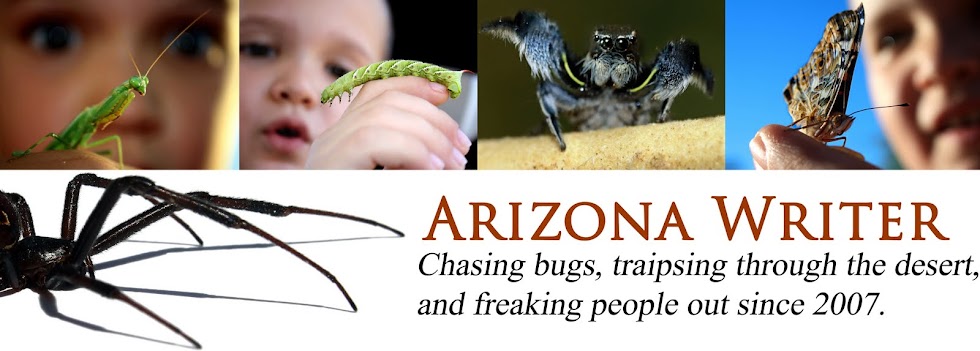As always, check out the gorgeous images at Spider Sunday on G+, and here are some more spidery goings-on!
Spiders in Borneo

If you're into spiders, or biology, or evolution, or super-cool stories, you need to read this blog series at Scientific American. Wayne Maddison is a spider guy. Scratch that. He's kind of like the Indiana Jones of jumping spider scientists. He treks about in off-the-map jungles, finding jumping spiders no one knows about yet. In other words, he does my absolute dream job, only fittingly, and unlike me, he's supremely qualified for the task. Start at the introduction and read through to his latest post, cataloging the specimens after some of the coolest field work ever.
I'm sure how you use it matters too
It's a crucial organ. Hardness, stiffness, shape, and ability to penetrate are all of utmost importance.
I'm talking about spider fangs, of course. What did it sound like I was talking about?
If you're a spider, fangs are pretty important, for defense as well as hunting. Many spiders subsist mainly on insects, whose exoskeletons are made of chitin, roughly the same material that makes up spider fangs. So how do the spiders penetrate the chemically similar exoskeletons of their prey? By injecting venom with fangs made of composite material, basically chitin layered with a fancy protein matrix, and tipped not with chitin, but with high amounts of zinc and chlorine. Explained with a higher knowledge of biomaterials and also a higher level of eloquence here. (Notice use of the word "venom" rather than "poison." Please, please notice this, any newspeople who fire off an article on the study.)
I've been withholding judgment on the handful of articles I've seen recently about using spider venom to fight breast cancer, mainly because I didn't have time to really read up on it and both spiders and cancer are rife with silly claims. However, this study at James Cook University seems to be legitimate, and we'll see where it goes. Heck, certain fish have been studied for kidney disease and skin cancer research and Gila monsters have given saliva for diabetes research, so why not? (However, word to the wise: Don't search online too long about animal-derived cures unless you have an abnormally high tolerance for bullshit, fake medicine, and animal cruelty.)
Can I just use them for fun?
One possible use for Google Glasses? Spiders everywhere!
This augmented reality application is supposed to be a next-gen treatment for arachnophobes. Check out the video at the bottom. My favorite part: The spiders' personalities are programmable. So we really are one step closer to artificial arachnid intelligence. My son will be thrilled.

0 comments:
Post a Comment